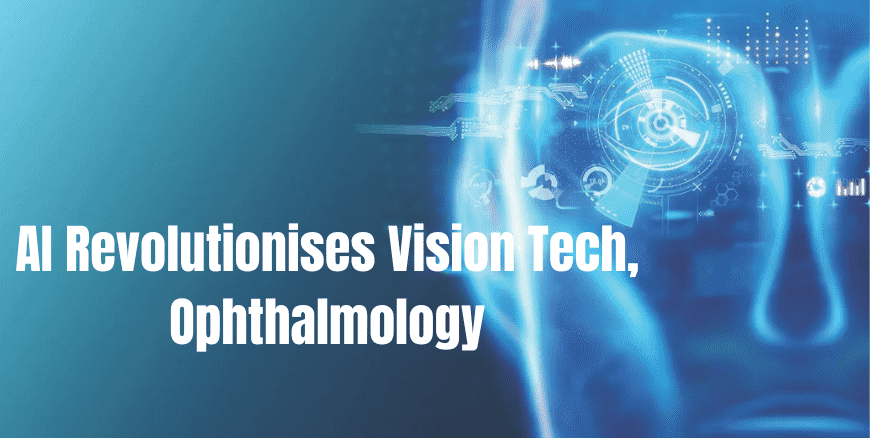The world of ophthalmology has witnessed an extraordinary transformation in recent years, thanks to groundbreaking advancements in medical technology. Two game-changing innovations, smart lasers and artificial intelligence (AI), have emerged as frontrunners in the realm of eye treatments. The seamless integration of these cutting-edge technologies has revolutionized the way we diagnose, treat, and manage various eye conditions. In this blog essay, we will delve into the exciting developments in smart lasers and AI applications within ophthalmology, showcasing their impact on patient care and visual health.
Smart Lasers in eye treatments
Smart lasers, also known as femtosecond lasers, represent a pinnacle of engineering precision. With their ultra-rapid pulses and unmatched accuracy, these lasers have ushered in a new era of eye surgeries. Among the most notable applications of smart lasers are LASIK (Laser-Assisted In Situ Keratomileusis) and cataract surgery.
LASIK - Crystal Clear Vision
LASIK has become the gold standard for correcting refractive errors like myopia, hyperopia, and astigmatism. Smart lasers have replaced the traditional microkeratome blade with a non-contact, computer-guided laser, which creates a precise corneal flap. This novel approach ensures enhanced predictability, safety, and reduced risk of complications, enabling millions to experience crystal-clear vision without dependence on glasses or contact lenses.
Cataract Surgery - Enhanced Outcomes
Cataract surgery, the most commonly performed surgical procedure worldwide, has also seen a paradigm shift with the integration of smart lasers. By using femtosecond lasers to create precise incisions and fragment the clouded lens, surgeons can now perform customized and minimally invasive surgeries. The accuracy and reproducibility of the laser-assisted approach have led to improved outcomes, faster visual recovery, and reduced surgical complications.
Artificial Intelligence: A Visionary Ally
Artificial intelligence, often considered the pinnacle of human ingenuity, has found an ideal application in the field of ophthalmology. By leveraging machine learning algorithms, AI has empowered eye care professionals with advanced tools for early disease detection, personalized treatment planning, and post-operative monitoring.
Disease Detection - Paving the Way for Preventive Care
AI-driven diagnostic tools have revolutionized the early detection of sight-threatening conditions such as diabetic retinopathy, age-related macular degeneration, and glaucoma. With remarkable accuracy and speed, AI can analyze vast amounts of medical imaging data, assisting ophthalmologists in detecting subtle changes indicative of diseases in their nascent stages. This early intervention paves the way for preventive care, preserving patients’ sight and quality of life.
Personalized Treatment Planning - Tailored Solutions
Each patient’s eyesight is unique, and AI enables the delivery of personalized treatment plans. By analyzing patient data, medical histories, and outcomes from similar cases, AI algorithms can recommend the most appropriate treatment options for individual patients. This ensures that treatment strategies are tailored to meet specific needs, optimizing success rates and minimizing potential risks.
Post-Operative Monitoring - Vigilance Made Simple
Post-operative care is a critical aspect of eye treatments, and AI offers invaluable support in monitoring patients’ progress. Through real-time analysis of follow-up data and remote wearable devices, AI algorithms can identify any anomalies or complications promptly. This proactive approach ensures timely medical interventions and fosters patient trust and satisfaction.
Conclusion
The amalgamation of smart lasers and artificial intelligence has not only revolutionized eye treatments but has redefined the landscape of ophthalmology. Smart lasers have raised the bar in surgical precision and safety, enabling patients to bid farewell to visual limitations. Meanwhile, AI’s prowess in diagnostics, personalized care, and post-operative monitoring has transformed eye care into a realm of preventive and patient-centric practices.
As these technologies continue to evolve, we can envision a future where eye treatments are more accessible, precise, and effective than ever before. The synergy between smart lasers and artificial intelligence holds the promise of brighter, healthier, and clearer visions for people around the world. In the pursuit of continuous advancements, the eyes of tomorrow will undoubtedly witness even more extraordinary horizons.

